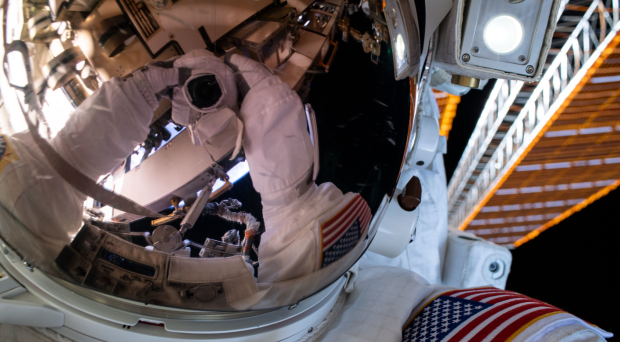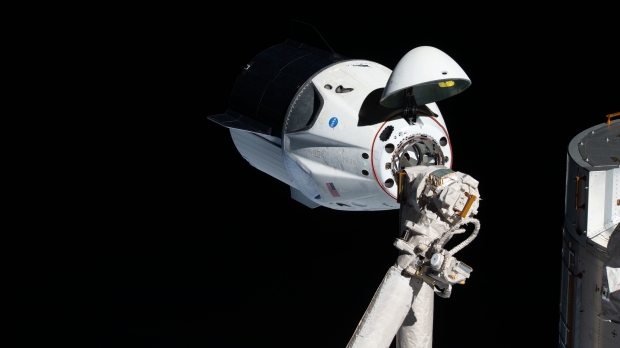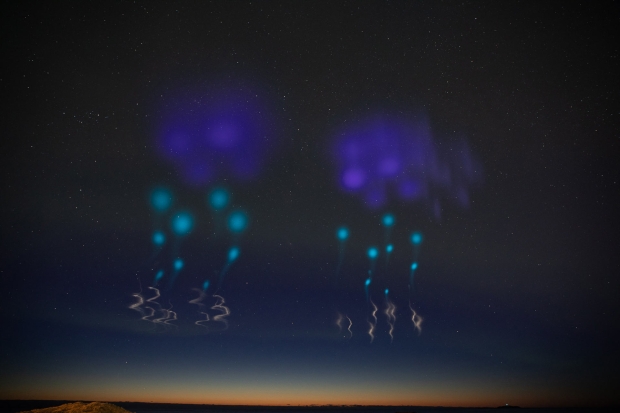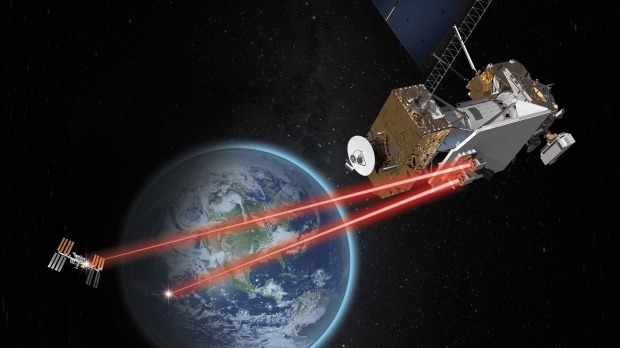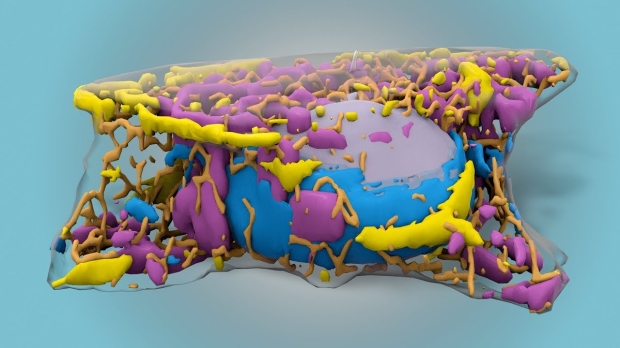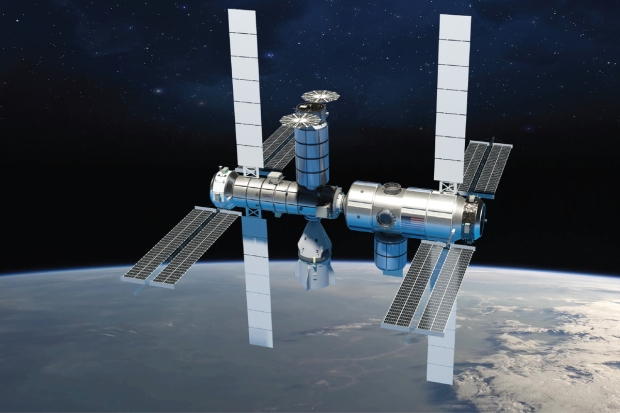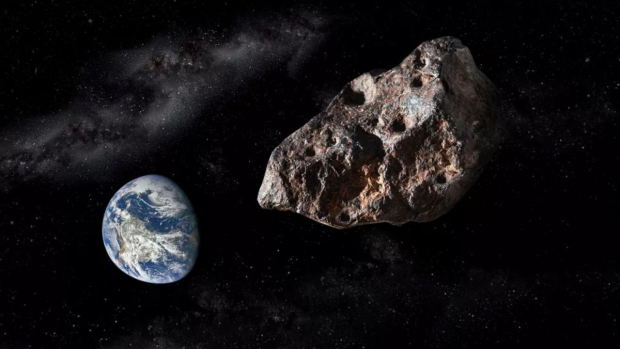Science, Space, Health & Robotics News - Page 230
Astronauts left in awe at 2021's only total solar eclipse, drops image
The International Space Station (ISS) is a fantastic vantage point for observing Earth, and recently astronauts aboard the station were left in awe at 2021's only total solar eclipse.
NASA has posted images to its "NASA Astronauts" Twitter account with a caption explaining that the Expedition 55 crew was able to view the total solar eclipse that happened on Saturday, December 4 at 2 a.m. EST (0700 GMT). Seven astronauts squeezed into the cupola, a large glass panoramic viewing dome, to see the phenomenon. NASA astronauts Kayla Barron described the event as "an incredible sight to behold."
A total solar eclipse happens when the Moon passes directly in front of the Sun from a viewer's perspective. The recent solar eclipse wasn't viewable for most people as the best angle to view its totality was in Antarctica, and while this didn't stop some photographers and scientists, it did mean most people missed it. The next total solar eclipse isn't expected to happen until April 20, 2023, and will be mostly viewable over Asia.
Continue reading: Astronauts left in awe at 2021's only total solar eclipse, drops image (full post)
NASA says SpaceX is currently its only option for shuttling astronauts
NASA recently extended its existing contract with SpaceX to include additional missions to send astronauts to the International Space Station (ISS).
SpaceX already has six crewed flights to the ISS using its Crew Dragon system planned as part of its contract with NASA. Now up to three more flights have been added to the contract. NASA solicited other companies before extending SpaceX's contract, but none met NASA's requirements.
"SpaceX's crew transportation system is the only one certified to meet NASA's safety requirements to transport crew to the space station, and to maintain the agency's obligation to its international partners in the needed timeframe," said NASA in a statement on December 3rd.
Continue reading: NASA says SpaceX is currently its only option for shuttling astronauts (full post)
Atmospheric anomaly due for study has puzzled scientists for decades
NASA has launched a sounding rocket from Norway to help understand the dense region of the upper atmosphere on Earth's sun-facing side.
There is a gap in Earth's magnetic field in a region known as the polar cusp. This gap allows solar winds from the sun to reach Earth's atmosphere, causes radio and GPS signals to behave strangely, and slows down spacecraft as they pass through this region. The air in this region is denser than elsewhere in spacecrafts' orbits around Earth, but it is not understood how or why.
The Cusp Region Experiment-2 (CREX-2) is funded by NASA and headed by Mark Conde from the University of Alaska Fairbanks Geophysical Institute. The mission aims to understand the dynamics in the cusp, first set to do so in 2019 as part of The Grand Challenge Initiative's Project CUSP. However, it was delayed due to little solar activity, and the Covid-19 pandemic only served to delay the flight further. Now, CREX-2 was finally able to launch on December 1st from a launchpad in Andenes, Norway, at 3:25 a.m. EST.
Continue reading: Atmospheric anomaly due for study has puzzled scientists for decades (full post)
NASA is due to launch $320 million experimental laser comms satellite
On December 7th, 2021, NASA plans to launch and test its $320 million high-speed laser communications device.
The experimental device will be launched aboard a United Launch Alliance (ULA) Atlas 5 rocket as part of a US Space Force mission. It is attached to a Space Force STPSat 6 satellite, the primary payload for the Atlas 5 rocket, which is destined for a geosynchronous orbit above Earth.
Lift-off is due for a two-hour launch window opening at 09:04 UTC on Tuesday, December 7th, from Cape Canaveral. Previously scheduled for December 5th, the launch was delayed due to a leak in the launch pad's kerosene fuel storage system.
Continue reading: NASA is due to launch $320 million experimental laser comms satellite (full post)
Entire cells visualised in 3D in minutes with soft X-ray technique
Researchers have recently used soft X-ray tomography (SXT) to render a high-resolution model of a cell and its internal structures in minutes.
Scanning electron microscopy is often used in cell imaging because it provides high-resolution nanoscale images. However, using scanning electron microscopes takes around a week to scan an individual cell, generating an enormous amount of data to analyze and interpret.
With SXT, scientists can create tomograms of a cell within five to ten minutes. When studying numerous cells, the significantly higher throughput makes SXT a much more practical analysis tool than the more data and time-intensive alternatives.
Continue reading: Entire cells visualised in 3D in minutes with soft X-ray technique (full post)
NASA signs agreements with three companies to build new space stations
NASA has signed agreements with three separate U.S. companies to develop private commercial space stations.
Northrop Grumman's space station concept.
Blue Origin, Nanoracks, and Northrop Grumman have all been awarded contracts worth a combined $415.6 million. They come as part of NASA's Commercial Low Earth Orbit Destinations (CLD) program, which seeks to help the development of private space stations that may one day succeed the aging International Space Station (ISS).
Continue reading: NASA signs agreements with three companies to build new space stations (full post)
Suicide machine approved for use in this country, will launch soon
Switzerland has officially approved the use of a coffin-shaped suicide machine that allows people to decide to kill themselves.
According to the company behind the machine, Exit International, the machine is called Sarco, which is short for sarcophagus and allows users to lay down in a coffin-shaped capsule that then reduces oxygen levels to fatal levels once the user initiates the process. The process takes less than a minute, and after the minute duration, death occurs through hypoxia and hypocapnia, which the Independent reports, "is intended to allow a person to die relatively peacefully and painlessly."
For those that don't know, assisted suicide is completely legal in Switzerland, as services such as Dignitas and Exit provide users with a digestible liquid drug that puts users in a deep coma that eventually results in death. Now, reports indicate that the Sacro has passed legal review, and according to Dr. Philip Nitschke, the creator of the Sacro, also dubbed "Dr. Death", "there are no legal issues at all" with the product and that discussions are currently underway with the goal to roll out the service to the public next year.
Continue reading: Suicide machine approved for use in this country, will launch soon (full post)
NASA confirms 1,000-foot asteroid will break into Earth's orbit soon
NASA is currently tracking on route to enter Earth's orbit, and it's estimated to be worth more than $5 billion.
The asteroid is dubbed "potentially dangerous," as is any space rock or comet that comes within the 4.65 million miles of Earth. The asteroid is dubbed 4660 Nereus, and while it is categorized as a "potentially hazardous" object, it will safely pass by Earth. The asteroid has a diameter of 1,085 feet and will break into Earth's orbit at a speed of 14,700 mph on Saturday, December 11, marking the closest the asteroid has come to Earth within 20 years.
When 4660 Nereus passes by Earth, it will be at a distance of 2.4 million miles, which is around 10 times the distance between the Earth and the Moon (238,855 miles). While 2.4 million miles sounds like an enormous distance when speaking in astronomical terms, it's quite small. According to the Asterank database that is currently tracking more than 60,000 asteroids, 4660 Nereus is estimated to contain $4.71 billion worth of nickel, iron, and cobalt.
Continue reading: NASA confirms 1,000-foot asteroid will break into Earth's orbit soon (full post)
5 outrageous facts about Earth more people should know about
For the entire duration of human existence, we have been trying to make sense of the planet we have been living on, called Earth.
Humans have come quite far in understanding the small blue planet we call home, and the solar system it resides in, but there is still a lot of questions that need answers. Researchers have discovered some quite outrageous facts about Earth throughout their research, and some of these discoveries have broken previously established understandings of our planet.
Below you will find five facts about Earth that aren't common knowledge, and some of them may even break preconceived ideas that teachers established during your early schooling years.
Continue reading: 5 outrageous facts about Earth more people should know about (full post)
Multiple eruptions on the Sun, impact may reach Earth in coming days
Reports indicate that there has been several eruptions on the surface of the Sun, and that a large magnetic filament has exploded.
Sunspot activity.
According to Spaceweather.com, the Sun featured eruptive activity on its departing southern limb, with a northern coronal hole passing centrally. The eruptive activity that was seen in the Sun's southern hemisphere that was departing can be attributed to sunspots that caused an M-class flare and plasma ejecta to be launched into space. The charged particles from the sunspot eruptive activity are not on track to collide with Earth.
Continue reading: Multiple eruptions on the Sun, impact may reach Earth in coming days (full post)


